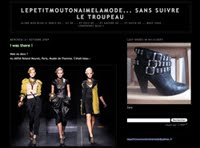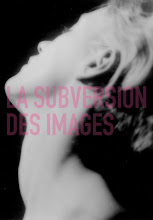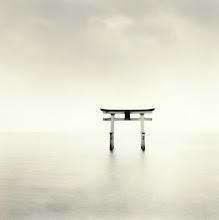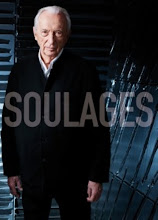*T'as quand même pas cru que j'allais te traduire mes dissert' de fac ??
Joel Peter Witkin is a photographer who can’t be dismissed or ignored. On seeing his pictures, no one can remain ambivalent. His images are undeniably powerful, frightening and fascinating, they put the observer in an uncomfortable position and repel him. Witkin has long specialised in subjects to which society tends to hyde : corpses, sex pariahs, circus freaks and so on, in order to respon to the ultimate question of life and death.
Joel-Peter Witkin was born in 1939 with a twin brother who was to become a painter and a triplet sister who didn’t survive. He is the son of an Ukrainian jew and an Italian Catholic, duality that will influence his work. At the age of six, Joel-Peter Witkin was the witness of a car accident in which a little girl was decapitated, her head rolling to stop at his feet, he recalls her eyes starring at him. He was then immersed in a Primal Therapy and as he was a teenager, he discovered sex life with an hermaphrodite. All these episodes may have had a bearing on his obsessed by death and freaks work. Lots of biographic elements can be found in his work.
One of his pictures was selected by Edward Steichen to be in the permanent collection of the MOMA of New York as he was just sixteen years old. After high school, he worked as a color printer before joining the army to document assorted military accident as a photographer. He married a tattoo artist. They live in Albuquerque with their son and Mrs Witkin’s female lover. Since the beginning of the eighties, he kept receiving grants and awards. His prints wormed their ways to the permanent collections of the foremost museum around the world, such as the MOMA of New York and San Fransisco, the Whitney Museum, the Bibliothèque Nationale de France.
Joel-Peter Witkin belongs to the postmodern, which is described in Photography, a Critical Introduction as the “emphasis on construction, the forging, the staging or fabrication of images.” That is exactly what he does. He begins by sketching
[1] his ideas on paper, perfecting every single detail before arranging the scene in studio like a film or theater director, making his models pose in theatrical, baroc and symbolic gestures. In a certain way, he can be compared to Gregory Crewdson, for that sense of staging. Onced photographed, he spends hours in the darkrooms, scratching, burning, piercing his negatives, then prints them, often through tissue paper in order to fuzz the texture of the image and give a specific blurry quality to the print. He then mounts the print on aluminium and applies pigments by hand. Finally he covers it with beewax and reheats them, before cools and polishes, giving a tactile texture to the print. With this long procedure, he only produces an average of 10 prints a year.
He constantly refers to painting from art history, especially the works of Bosch, Goya, Velasquez, Miro, Picasso, and Boticelli. He produced his own version of famous masterpieces such as the Man Ray’s
Kiki Ingres’ Violin[2], Goya’s
Don Manuel Osorio De Zuniga, Canova’s
Paolina Borghese as Venus Victorious, Rubens’
Little Fur, Wood’s
Portrait of Nan, Rembrandt’s
Saskia as Flora… in order to create his own history by using symbols from the past, creating his own artistic family. The resulting photographs are haunting and have a hideous beauty that is as compelling as it is taboo.



He is also influenced by Weegee’s and Diane Arbus’ works. But whereas they document about people, he invites them to the studio, a different way to put them in the light. God is one of the main theme of Witkin. Practising Roman Catholic himself, he seems to be obsessed with the fetishizing of all the ordinarily repressed or shunned by the church. He very often reffers to the Bible main episodes or characters such as the
Expulsion from paradise of Adam and Eve,
Mother and Child,
The Wife of Cain or to the Antiquity myths such as
Leda,
Le Jugement de Paris,
Amour. Witkin reuse these myths not to celebrate them but to describe the soul distorsion they’re actually rebealing in his opinion. In Leda for instance, Leda is a rickety drag queen, Zeus disguised as a swan is actually a product of taxidermy, and the windged babies, issues from the giant egg of that union in the background, are crawling at their parents’feet. In Amour, Venus is reduced to a lethargic beast, Cupid to a dead monkey and a man masturbates above her. At the very beginning, these myths were celebrating love and desire. In Witkin’s imagery transforms them in the expression of modern passionless self-pleasuring or physical desire reduced to amnesia.




On a portrait taken by his wife, he is represented wearing a mask with the crusified Christ on it. The Cruxified Christ is a recurrent “character” in Witkin’s tableaus, either it is disguised in a
Cruxified Horse[3] or a Masochist’s ritual. Marthyrs are also represented in Witkin’s imagery. Armless, legless, eyelidsless, a thalidomide victim poses as
Un Santo Obscuro with a cleaver through his head, a knife in his shoulder, a mail collar and a prothesis. Saint Sebastian appears very often in homosexual iconography : killed in his beautiful youth, he represents erotism. In Witkin’s
Queer Saint is actually a skeleton pierced by arrows, joined to a dead head and a severed penis. In that tableau, Witkin reduces Saint Sebastian’s saintly to nothing.



Masks and eyes-covering are recurring in Witkin’s work. They are as much symbols of fetishism as a way to let his models stay anonymous and give to his tableaus and allegories a universal message. The mask allows him to replace the model’s actual mask (his own personnality or how he acts to present himself) and to creates another one for him; Witkin replaces the metaphorical mask by a reel one
[4]. Very often that new pesonnality is the photographer’s own soul. In the preparatory drawing for
Las Meninas, he labelled the legless Infanta supported by a farthingale on wheels as “Me Crippled”. But Las Meninas is also the only picture in which Witkin poses
[5] with his models. All his work implicate him as the main freak. In that way we can say that Witkin’s pictures are really self-conscious, but they all have paradoxally a universal message.

Some pictures he made are wirdly sexually attractive. A somptuous blond legless woman poses nude on a three-feeted table
[6], carressing her shoulders in a narcissism and sensual gesture.
The Kiss is actually the image of a single dead man’s head that has been cut in half down to the middle, posing as two separate heads kissing. As strange as it is, that kiss is pleasant to look at even if our intellect denies it and that, in the face of reason, it cannot be pleasant to a dead head. This image has a lot of potential meanings : the dead is able to communicate, or can be another allegory of self-pleasuring.
Three Graces after Rubens shows three pre-op transexuels, very feminine and sensual, we almost don’t see their penises or the dead monkey heads they are holding. They are just three beautiful creatures we almost feel guilty to be attracted to. The same thing happens when we look at Witkin’s version of Boticelli’s Venus’ Birth :
Gods of Earth and Heaven. A child
[7] is innocently leaning naked on an antique armchair. His tranquility put us in a ambiguous discomfort and remind us of Lewis Caroll’s pictures of little girls or of Sally Mann’s controversial pictures
[8] of naked children.
In Humor and Fear, despite of the humoristic approach through the Mickey Mouse ears, he makes that woman look sexy, while suffering of toxic shock after having a breast enlargment, her legs, fingers and breasts had to be removed. The pose
[9] and the plastic cones brassiere make us focus on her beauty before we can find out what happened to her and start feeling uncomfortable about what we were thinking just a moment before. But Witkin once again gives to the usually ostracized and considered as undesirable a human appearence.



Titles are really important in Witkin creation process. They transcends mere labelling, add dimensions to images that already bear multiple shades of meaning and set a tone in which each picture might be seen. For instance, Testicle Stretch with the Possibility of a Crushed Face, Angel of the Carrots, Woman Breastfeeding an Eel etc. Most of his pictures are baroc, sometimes rococco, they have become decorative arts, even if I personally wouldn’t put one of his piece on my wall, the richness and the macabre beauty of his work make him one of the most popular photographer among collectors.

His portraits of dead are quite different from the rest. They possess a more quiet sense of dignity, composition is plainer, sets are smaller. For instance,
The cornucopian dog,
Mask and Severed Genitalia as Netsuke, or
Theatro di Morte are composed with less elements in the frame, the observer can focus on the severed penis reposant on two skulls like a huge snail or on the dead foetus resting between an old dead woman’s head and a skull, all morbidity’s elements which paradoxicaly represent the Trinity
[10].

Witkin’s subject matter is atrocity personified : anyone who is victim of it by accident, sickness or unfortunate birth. He make the ugly beautiful
[11] by showing an unconditionnal acceptance of the difference, or in order to overcome his own repulsion of them. He“casts” his models, people most often cast aside by society, through adverts and visits to medical schools, hospitals and insane asylums. He looks for hermaphrodites, dwarfs, corpses, sex pariahs, circus freaks, amputees, carcases, people with odd physical capabilities, fetichists, pre-op transsexuals, bearded women, hunchback... He runs adverts seeking for “physical prodigies of all kind” , “any living myth (...) anyone bearing the wounds of Christ”. He succeeded in reaching so much freaks and other pinnacles of unseen society that he added to his first request “ women whose faces are covered with hair or large skin lesions willing to pose in evening owns. People who lives as comic-book heroes, boot corset and bondage fetichists; Anyone claiming to be God. God”. Witkin also visits morgues in order to find dead body, or severed members, heads or penises, that he chooses very meticoulously.
Most people are shocked by Witkin’s photographs. We often look away when confronted to the imagery of death, dying, deformed or anything that does not conform to the norm. It has not always been like that. For instance, in Antiquity, monstrosity was cultivated as wonder and omen. In the nineteenth century, pictures of “the other” were quite popular. Indeed pictures of all kind of freaks was taken in aim to record all human beeing “type”, i.e August Sander’s work.
Witkin’s work leads him to his spiritual goal of divine and truth as he said himself. He thinks that each totally sastifying picture he achieves makes a part of him die and that his quest will end when he will be emptied by his work.
Because of the extreme nature of his vision and subject matter, his work is sometimes labelled exploitive. In fact he leads us to wonder about our references, about right and wrong, sexuality and among other about tolerance and our ability to understand.
[1] In an interview by Chris Buck and Christine Alevizakis, Witkin said “I have a sketchbook that’s about four inches thick with things I have written down, dawn and collect from various sources that interest me. What I do every month or two is sit down and go through that book and think in terms of where I want to direct my energies.”
[2] Letters refer to images at the end of the essay.
[3] When he chose to use a horse in reference to Dante’s theory that animals and plants possess primitive souls and are surrogates of God.
[4] That real mask in not always an actual object. In The cornucopian dog he gave to that dead animal the look of an alive one, its expression is actually just a mask.
[5] He plays Velasquez in the corner.
[6] Woman on a table, Albuquerque
[7] Nude with mask, Los Angeles 1988
[8] Sally Mann took pictures of her own children, often naked and in some sensual poses. She has been accused of incest for that.
[9] The picture and consequently the pose have been inspired by Titian’s Sacred and Profane Love.
[10] Three stages of life : Youth, Maturity and Old age.
[11] « Those who understand what I do appreciate the determination, love, and courage it takes to find wonder and beauty in people who are considered by society to be dammged, unclean, dysfonctionnal or wretched. My art is the way I perceive and define life. It is sacre work, since what I make are my prayers.” said Witkin once he was invited to the Saturday Night Live.
Bibliography/Webography
Bibliography :
Joel Peter Witkin, Forty Photographs, San Fransisco Museum of Modern Art, 1986
Joel-Peter Witkin, 55, Phaidon 2001
Joel-Peter Witkin, The Bone House, Twin Palm Publishers, 1998
Germano Celant, Witkin, Scalo 1995
Joel-Peter Witkin, Gods of Earth and Heaven, Twelvetrees Press 1991
Joel-Peter Witkin and Pierre Borhan, Disciple & Master
Liz Well, Photography : A Critical Introduction, Routledge 2000
Museum Ludwig Cologne, 20th Century Photography, Taschen 1996
Webography :
 Dans cette série, Lars Tunbjörk nous montre la Suède comme on ne l'a jamais vue. Loin des clichés qu'on lui connait, elle nous apparait plus vrai, plus triste que ce que l'on imagine à savoir un pays tout blanc de neige imaculée (mais la neige peut-elle rester imaculée ?) rempli de belles personnes grandes, minces et blondes et vivant dans des jolies maisons en bois rouge, joliement amménagée par IKEA... Mais en alternant intérieurs et extérieurs, en nous empêchant de nous rassurer par la contemplation d'une "belle" image, Lars Tunbjörk nous embarque dans une frénésie d'images qui rompent radicalement avec cet imaginaire. L'acuité et l'humour (noir) de son regard nous fait prendre conscience de ce qu'est notre monde, et peut être aurait-on préféré rester dans notre imaginaire...
Dans cette série, Lars Tunbjörk nous montre la Suède comme on ne l'a jamais vue. Loin des clichés qu'on lui connait, elle nous apparait plus vrai, plus triste que ce que l'on imagine à savoir un pays tout blanc de neige imaculée (mais la neige peut-elle rester imaculée ?) rempli de belles personnes grandes, minces et blondes et vivant dans des jolies maisons en bois rouge, joliement amménagée par IKEA... Mais en alternant intérieurs et extérieurs, en nous empêchant de nous rassurer par la contemplation d'une "belle" image, Lars Tunbjörk nous embarque dans une frénésie d'images qui rompent radicalement avec cet imaginaire. L'acuité et l'humour (noir) de son regard nous fait prendre conscience de ce qu'est notre monde, et peut être aurait-on préféré rester dans notre imaginaire...



































